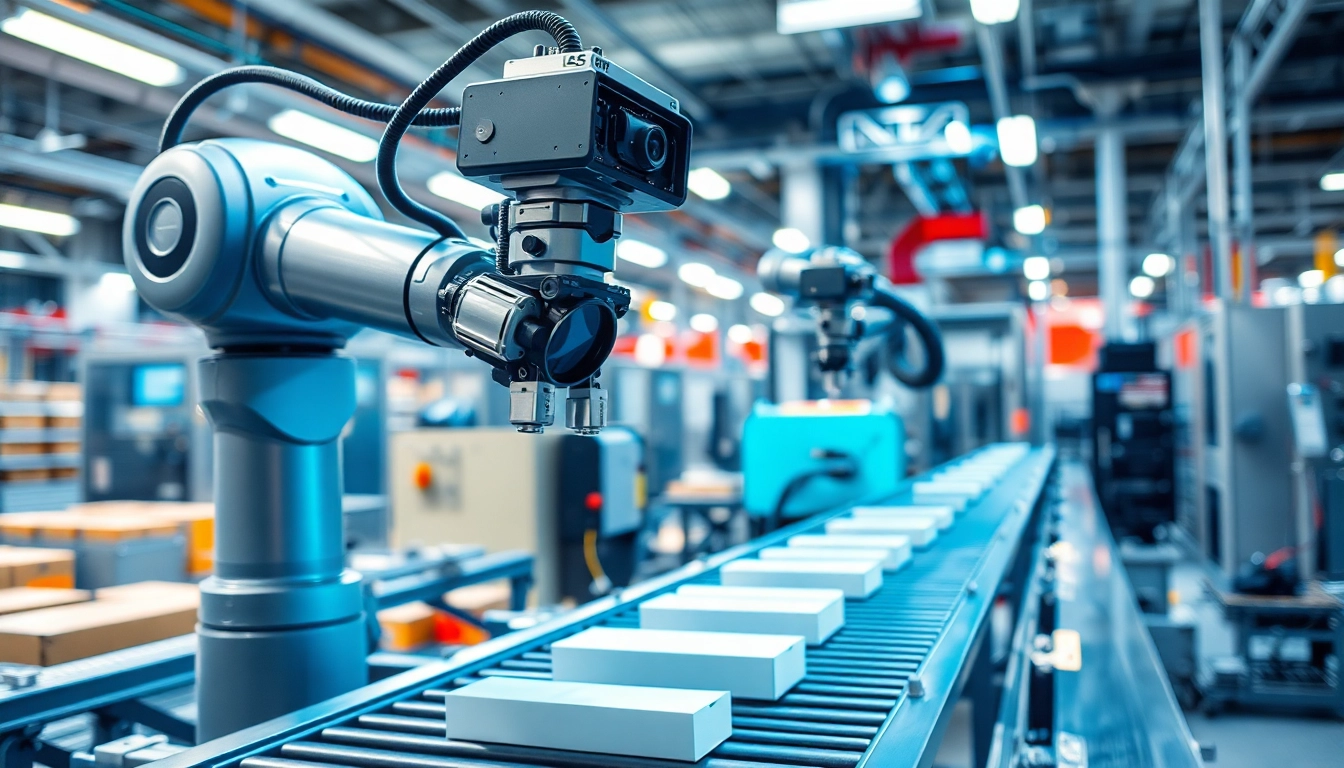
What is Machine Vision?
Definition and Importance
Machine vision is a technology that allows computers to interpret and understand visual information from the world around them. It utilizes digital imaging techniques, including cameras and image processing software, to analyze visual input, making it possible for machines to perform tasks that require human-like visual capabilities. In recent years, machine vision systems have become increasingly important in various industries due to their ability to enhance automation, ensure quality control, and improve operational efficiency.
How Machine Vision Works
The functionality of machine vision is rooted in three fundamental processes: image acquisition, image processing, and decision making. The process starts with image acquisition, where high-resolution cameras capture visual data. This image is then converted from analog signals to digital format.
Next comes the image processing phase, where algorithms analyze the digital images. This step often involves filtering, edge detection, and segmentation to extract relevant features from the images. Finally, in the decision-making phase, the system interprets the processed data to make informed decisions. This can include defect detection in quality control, guided assembly in manufacturing, or object recognition for robotic applications.
Key Components of a Machine Vision System
A complete machine vision system consists of multiple components, each playing a critical role in its functionality:
- Cameras: The eyes of the machine vision system that capture the images, which can range from standard cameras to specialized industrial models.
- Illumination: Proper lighting is vital for achieving optimal image quality and contrast. Various lighting techniques can be adopted depending on the application.
- Computing Hardware: This includes processors and controllers that run the software algorithms required for image processing.
- Software: The algorithms and applications that process the captured images and deliver actionable outputs.
- Interface: Connectivity components that allow the machine vision system to integrate with other systems in the manufacturing ecosystem.
Applications of Machine Vision in Various Industries
Manufacturing
In manufacturing, machine vision is primarily utilized for quality control and inspection. It enables manufacturers to identify defects in components and products at high speeds, ensuring that only products meeting quality standards proceed down the production line. For example, machine vision systems can check the dimensions of parts, ensuring they meet specifications, or detect surface defects that may compromise functionality.
Food and Beverage
In the food and beverage industry, machine vision plays a pivotal role in ensuring safety and quality. Systems can monitor production processes for contamination or packaging errors. For example, machine vision can verify that packaging is sealed correctly and label all items with accuracy. Furthermore, it ensures the right product reaches consumers, which is increasingly important in today’s market where quality assurance is paramount.
Healthcare and Pharmaceuticals
In healthcare and pharmaceuticals, machine vision aids in quality control and ensures compliance with rigorous regulatory standards. Machine vision systems can inspect pharmaceutical products for defects, check labels for accuracy, and ensure that packaging is tamper-proof. In clinical settings, they can assist in imaging processes such as analyzing microscopic slides or capturing images for diagnostic purposes.
Benefits of Implementing Machine Vision Technologies
Improved Quality Control
Machine vision significantly enhances quality control measures. With automated inspection processes, organizations can detect defects early in production, which reduces returns and increases customer satisfaction. These systems provide a level of consistency that manual inspections cannot match, delivering higher accuracy in quality assessments.
Increased Efficiency
Another key benefit of machine vision is efficiency. Automated systems can work continuously without the fatigue that affects human operators. This capability not only speeds up operations but also frees up human resources to focus on more complex tasks that require critical thinking and decision-making skills.
Cost Reduction
Implementing machine vision can lead to significant cost savings over time. By reducing waste through precise quality control and improving labor efficiency, companies can lower production costs. Additionally, machine vision systems often lead to better product yield, which acts as both a direct and indirect cost saver for businesses.
Challenges in Machine Vision Implementation
Integration with Existing Systems
One of the primary challenges in adopting machine vision is integrating with existing manufacturing systems. Compatibility issues can arise, especially in older setups. To address this, a thorough assessment of current systems and careful planning for integration is crucial. In some cases, it may be beneficial to gradually phase in new technology alongside established machinery.
Data Management
Machine vision generates vast amounts of data that need to be managed effectively. Organizations must have the necessary infrastructure in place to store, analyze, and derive insights from this data. Leveraging cloud computing and big data analytics can dramatically improve data management capabilities and facilitate timely decision-making.
Training and Expertise
The successful implementation of machine vision systems requires a workforce that is trained in both the technology itself and its applications. This need for specialized knowledge presents a challenge, as organizations may need to invest in training programs or hire new talent with relevant expertise. Building a team that understands machine vision’s complexities can lead to better utilization of the technology and more innovative applications.
The Future of Machine Vision Technology
Emerging Trends
As technology evolves, so too do machine vision applications. Some of the emerging trends include the integration of artificial intelligence (AI) and machine learning (ML) into vision systems. These advancements enable systems to learn from data, improving their accuracy and performance over time. Additionally, the rise of smart factories and Industry 4.0 initiatives is encouraging the adoption of more sophisticated vision systems that are interconnected and capable of real-time data analysis.
Advancements in AI and Machine Learning
The integration of AI and machine learning into machine vision significantly enhances its capabilities. These advancements allow systems to recognize complex patterns in visual data, enabling more sophisticated decision-making processes. For example, ML can help identify potential problems before they arise, which aids in preventative maintenance and reduces downtime.
The Role of Machine Vision in Industry 4.0
Machine vision plays a crucial role in the transition to Industry 4.0. As production environments become increasingly interconnected through IoT devices and smart automation, machine vision systems will be essential for processing and analyzing the data generated by these devices. This transition promises to result in more efficient and responsive manufacturing ecosystems, where machine vision is integrated into every aspect of production, from design to delivery.






